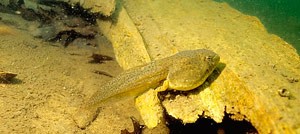
Kermit the Frog once sang, “It’s not easy bein’ green.” His melancholy was well placed. It is not a good time to be a frog: the world over, frogs and other amphibians are dying from mysterious causes, though some of those mysteries are starting to unravel.
Aside from the usual suspects: habitat loss, climate change, pollution, and ultraviolet radiation, there are a number of infectious diseases that sicken and kill frogs in the eastern U.S.
There are ranaviruses, which affect insects, fish, and amphibians. In frogs, tadpoles and newly metamorphosed adults are the most susceptible. Once infected, frogs develop small ulcers and experience multiple organ failure. In recent years, ranavirus outbreaks have killed wood frogs, green frogs, peepers, and bullfrogs across the Northeast.
Then there’s the chytrid fungus, which attacks the semi-permeable skin of frogs, causing chytridiomyosis – thickened skin and behavior changes – though scientists don’t know exactly how it ultimately kills frogs. Of 6,000 known species of frogs worldwide, the chytrid fungus is believed to have wiped out 170 and endangered 1,900 others; most frogs and toads in the Northeast are vulnerable to it, though some can remain healthy despite infection.
And scientists have just found yet another pathogen of concern. This organism – a spherical, one-celled parasite – hasn’t yet been named, though the scientist who first discovered it, veterinary pathologist D. Earl Green of the National Wildlife Health Center, has had plenty of time to get to know it. Green initially made acquaintance with the parasite in 1999, when the first of many frogs with this unusual infection was sent to his lab, and he has been quietly tracking and studying it ever since.
The organs – especially the livers – of infected frogs (in the tadpole stage) are chock-full of the parasites, which are related to a marine shellfish parasite called Perkinsus. Infected tadpoles are sluggish, grow slowly, and exhibit massively distended livers, until they eventually die.
News of this disease became public in 2007, after scientists from the University of Georgia studying leopard frogs discovered mass die-offs in their study ponds. Green’s experience revealed the nature of the parasite, while the University of Georgia researchers’ work revealed the extent to which it had infected the frog populations they were studying. The team found that 25 percent of the tadpoles they examined were infected: these tadpoles had enlarged abdomens, swam erratically, and were easy to catch. Dissection revealed that their livers and kidneys contained hundreds of thousands of the spherical parasites.
There is much left to discover about the nature of this parasite, from its evolutionary history to its mode of transmission, but it’s another piece of the puzzle that will ultimately reveal why amphibians across the globe are disappearing so rapidly.

